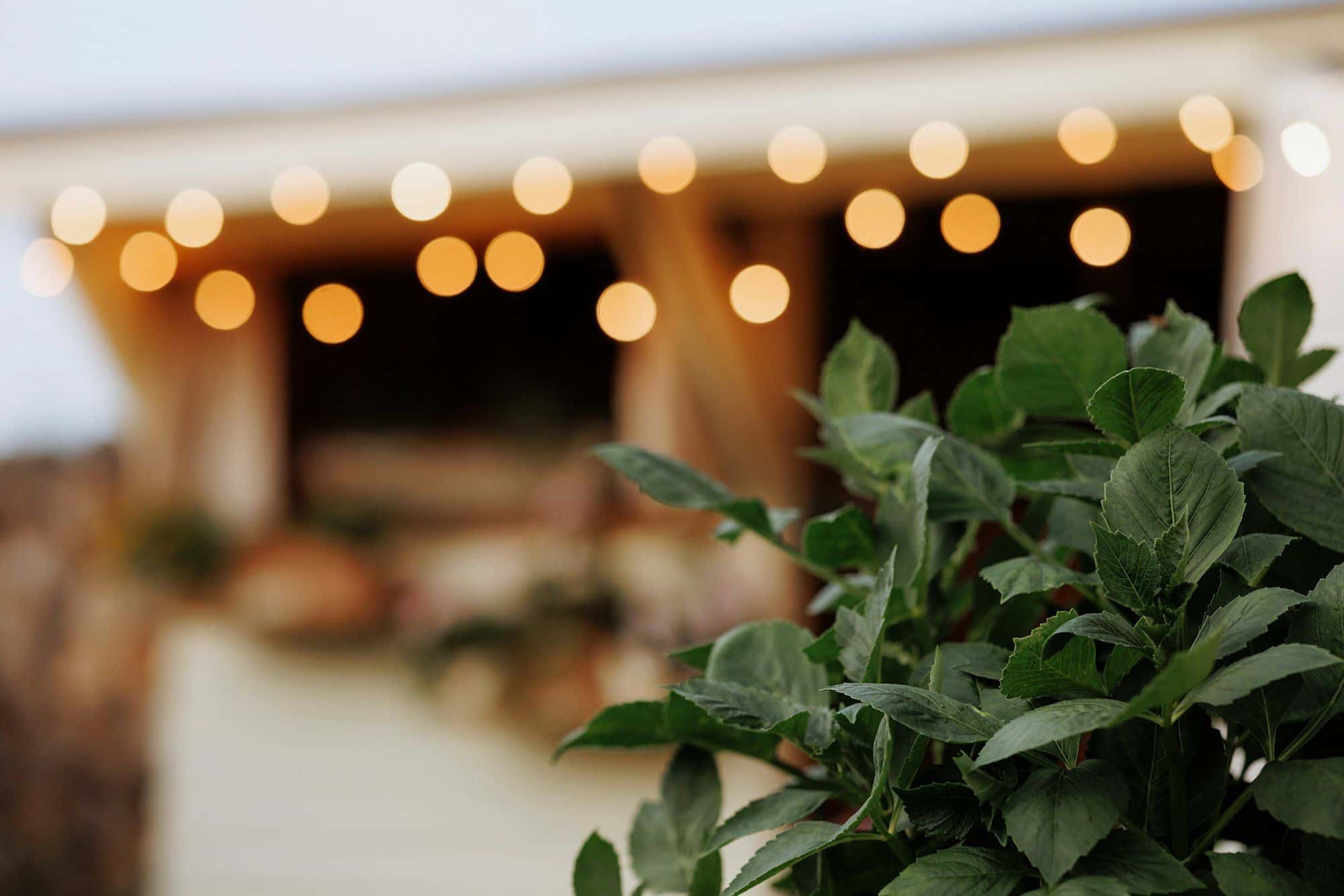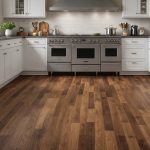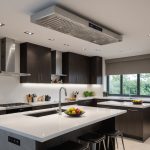Creating a captivating atmosphere in your restaurant is essential for attracting and retaining customers. Feng Shui, the ancient Chinese practice of arranging spaces to promote harmony, can transform your dining environment. By harnessing its principles, you can improve the energy flow, enhance guest comfort, and cultivate a memorable dining experience. Discover how thoughtful design and strategic placements can elevate your restaurant's ambiance, leading to increased satisfaction and loyalty. Embrace the art of Feng Shui and watch your establishment thrive!
Understanding Feng Shui in Restaurant Design
Exploring feng shui principles can significantly enhance restaurant design by creating a harmonious and inviting atmosphere. Originating from ancient Chinese philosophy, feng shui focuses on balancing energy, or "chi," to improve the environment's overall vibe. This practice is particularly relevant in restaurant settings, where ambiance plays a crucial role in customer satisfaction.
Key feng shui principles include the strategic placement of furniture to facilitate positive energy flow, using natural elements like water and plants to create a calming environment, and ensuring good lighting to enhance the dining experience. For instance, tables should be positioned to allow easy movement and avoid blocking pathways, fostering a sense of openness and accessibility.
The impact of feng shui on customer experience is profound. A well-designed space that adheres to these principles can lead to increased comfort and relaxation, encouraging patrons to linger longer and return frequently. By incorporating feng shui into restaurant design, owners can not only improve the aesthetic appeal but also create a space that feels welcoming and balanced, ultimately boosting customer satisfaction and loyalty.
Layout Strategies for Optimal Energy Flow
A well-considered restaurant layout is crucial for enhancing both energy flow and customer experience. The arrangement of tables and seating directly influences how energy circulates within the space, impacting patrons' comfort and satisfaction.
Incorporating effective seating strategies can significantly improve the energy flow. Tables should be spaced to allow smooth customer movement, avoiding congestion and ensuring easy access to all areas. This not only enhances the dining experience but also contributes to a more harmonious atmosphere.
Restaurants often consist of distinct zones, each with a specific purpose. The dining area should be designed to promote interaction and comfort, while maintaining clear sightlines to the kitchen can add transparency and intrigue. Entry points also play a vital role; they should be welcoming and unobstructed to facilitate a seamless transition into the dining space.
By thoughtfully organizing these zones and paying attention to flow dynamics, restaurant owners can create an environment that feels open and inviting. This strategic approach to restaurant layout not only maximizes space efficiency but also fosters a positive ambiance that encourages patrons to relax and enjoy their dining experience.
Color Schemes and Their Impact on Ambiance
Understanding color psychology is essential in creating an inviting dining environment. The choice of restaurant colors can significantly influence the ambiance, affecting both the mood and overall dining experience of patrons.
Warm colors such as red, orange, and yellow are often recommended to promote a sense of warmth and comfort. These hues can stimulate appetite and encourage conversation, making them ideal for social dining spaces. In contrast, cooler tones like blue and green are known for their calming effects, which can enhance relaxation and focus, suitable for more intimate or upscale settings.
The impact of these color choices is profound. For instance, a restaurant aiming to create a lively and energetic atmosphere might opt for vibrant reds and oranges. Meanwhile, a space designed for tranquility and contemplation might incorporate softer greens and blues.
By carefully selecting a color palette that aligns with the desired ambiance, restaurant owners can enhance the overall experience for their guests. This strategic use of color not only contributes to the aesthetic appeal but also plays a crucial role in shaping the emotional and psychological responses of diners, ultimately influencing their satisfaction and likelihood of returning.
Decor Elements that Enhance Feng Shui
Incorporating the right decorative elements can significantly bolster the principles of feng shui decor in a restaurant, enhancing the overall ambiance creation. Key elements include the use of natural materials, which not only add aesthetic value but also promote harmony and balance within the space.
Natural materials such as wood, stone, and bamboo are highly recommended in feng shui. They bring a sense of grounding and connection to nature, fostering a calming and inviting atmosphere. These materials can be integrated into furniture, flooring, or even wall accents, adding texture and depth to the decor.
Plants are another vital component, symbolising growth and vitality. They can be strategically placed to soften harsh corners and improve the flow of energy. Additionally, plants contribute to air purification, enhancing the overall environment.
When selecting decor, it's crucial to balance aesthetics with functionality. Items should not only be visually pleasing but also serve a purpose, whether it's improving comfort or facilitating movement. By thoughtfully choosing decorative elements that align with feng shui principles, restaurant owners can create a space that is both beautiful and harmonious, encouraging a positive dining experience for patrons.
Lighting Techniques to Elevate Experience
In the realm of restaurant lighting, achieving the perfect balance is crucial for setting the desired mood and enhancing the overall ambiance improvement. The right lighting can transform a dining experience, making it memorable and inviting.
Mood lighting plays a pivotal role in creating an atmosphere that aligns with the restaurant's theme and the time of day. There are three primary types of lighting: ambient, task, and accent. Ambient lighting serves as the main source, providing overall illumination and setting the base tone for the space. Task lighting is more focused, ideal for areas where specific activities like food preparation or reading menus occur. Accent lighting adds depth and drama, highlighting architectural features or artwork.
To achieve the right balance, consider the restaurant's operational hours. For lunch, brighter ambient lighting can energise the space, while dinner may benefit from softer, warmer tones to encourage relaxation. Adjustable lighting systems offer flexibility, allowing for seamless transitions between different dining times. By thoughtfully integrating these lighting techniques, restaurant owners can significantly enhance the dining experience, making their establishment both visually appealing and comfortable.
Incorporating Water Features for Harmony
Integrating water features into restaurant design can significantly enhance harmony and create a calming ambiance. Water, a vital feng shui element, symbolizes wealth and prosperity, making it an ideal addition to dining spaces aiming for balance and tranquillity.
Benefits of water elements include their ability to soothe and relax patrons, encouraging longer visits and repeat business. The gentle sound of flowing water can also mask unwanted noise, contributing to a serene dining environment.
When considering ideas for incorporating water features, think about options like tabletop fountains or wall-mounted waterfalls. These can be strategically placed to complement the restaurant's layout, ensuring they enhance rather than disrupt the flow of energy. Outdoor spaces can benefit from larger installations such as ponds or cascading water walls, which serve as attractive focal points.
However, maintenance considerations are crucial. Regular cleaning and water quality checks are essential to prevent stagnation and ensure the feature remains visually appealing. Additionally, consider the placement of water features to avoid potential slip hazards. By thoughtfully integrating and maintaining these elements, restaurant owners can harness the power of water to foster a welcoming and harmonious atmosphere.
Successful Case Studies of Feng Shui Implementations
Exploring feng shui success stories in the restaurant industry reveals insightful examples of how these principles can transform dining spaces. Various restaurant case studies highlight the tangible impact of feng shui on customer satisfaction and overall ambiance.
One notable case is a popular Asian bistro that reconfigured its layout to enhance energy flow. By strategically placing tables and incorporating natural elements like bamboo and water features, the restaurant reported a significant increase in patron comfort and return visits. These changes fostered a welcoming atmosphere, encouraging diners to linger and enjoy their meals.
Another example involves a high-end establishment that adjusted its lighting and color scheme based on feng shui principles. By opting for warm, inviting tones and adjustable lighting, they created a dynamic dining experience that adapted to different times of the day. This approach not only improved the aesthetic appeal but also boosted customer satisfaction by aligning the environment with diners' moods.
Lessons from these restaurant case studies emphasize the importance of thoughtful design and attention to detail. Best practices include balancing aesthetics with functionality and prioritizing elements that enhance both energy flow and customer comfort. These successful implementations underscore feng shui's potential to elevate dining experiences.
Potential Benefits of Applying Feng Shui
Exploring the feng shui benefits in restaurant design can lead to remarkable improvements in both business performance and customer enjoyment. By creating a balanced and harmonious environment, restaurants can see increased customer retention and loyalty. Patrons are more likely to return to a space that feels welcoming and comfortable, enhancing their overall dining experience.
Feng shui doesn't just impact customers; it also positively affects staff morale and productivity. A well-designed space can foster a supportive and energizing work environment, leading to happier employees who are more engaged and efficient. This, in turn, contributes to smoother operations and better service, further enhancing customer satisfaction.
Long-term improvements in business performance are often linked to ambiance enhancement through feng shui. A restaurant that consistently provides a positive experience is likely to enjoy higher patronage and profitability. The strategic use of feng shui principles can create an atmosphere that not only attracts new customers but also encourages them to become regulars, ensuring sustained success. By focusing on these elements, restaurant owners can harness the full potential of feng shui to boost their establishment's appeal and performance.
Practical Tips for Restaurant Owners
For restaurant owners keen on leveraging feng shui tips, implementing these actionable strategies can markedly improve your establishment's energy and ambiance. Begin by assessing your current layout and identifying areas where energy flow is obstructed. Rearrange furniture to promote openness and ease of movement, ensuring pathways are clear and inviting.
When applying feng shui principles, avoid common pitfalls such as clutter and poor lighting. Clutter disrupts energy flow, so maintain a tidy environment. Ensure lighting is balanced, using a mix of ambient, task, and accent lighting to create a welcoming atmosphere.
To further your understanding and implementation of feng shui, consider exploring resources like books, online courses, or consulting with a feng shui expert. These resources can provide deeper insights into the philosophy and offer tailored advice for your space.
For practical application, incorporate elements such as plants and water features to enhance tranquility and balance. Remember, the goal is to create a harmonious environment that fosters positive energy, benefiting both patrons and staff. By following these actionable strategies, you can transform your restaurant into a space that is both aesthetically pleasing and energetically balanced.











